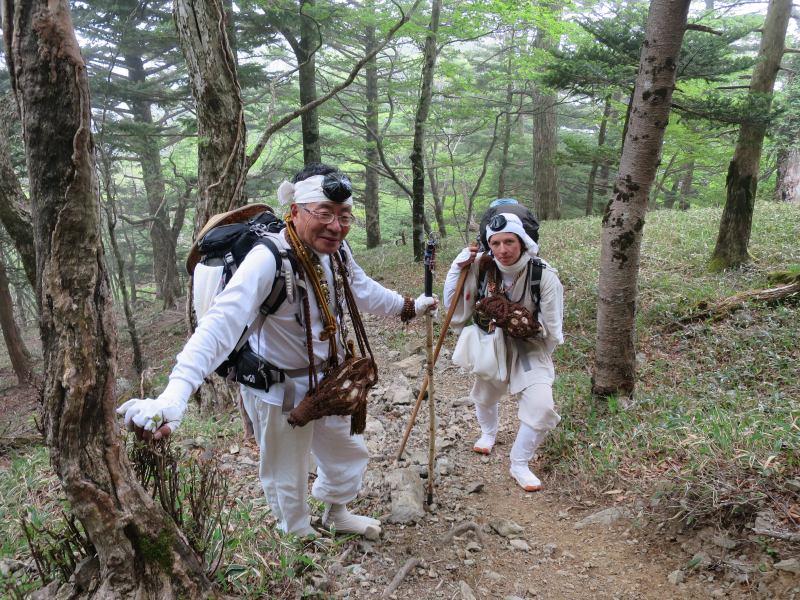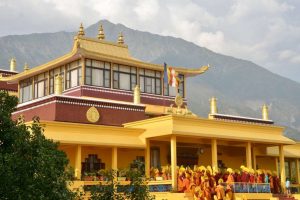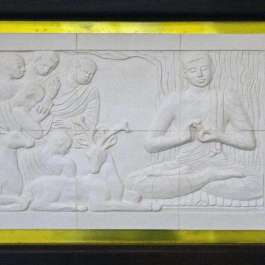
I am often asked whether I came to Japan in order to train in Shugendo. Just as often, I am asked whether I am an academic who is researching Shugendo for a PhD thesis. Neither is the case. Rather, it was a serendipity around a yearning for being in nature and searching for spirit. In this three-part series, I will discuss my own path into Shugendo and my training and experiences as a Shugendo practitioner.
Tokyo: from corporate to martial
I came to Japan in 2005 to join the Executive Training Program (ETP) Japan in Tokyo. I was all set for a corporate career and life in Japan’s capital. I had lived in London for nine years prior, working as a research manager, so coming to Tokyo was a new challenge and a step up.
In Tokyo, I went through Japanese language and business training, which was high-level and aimed at young managers in European businesses dealing with Japanese clients. I felt privileged to be on this program, yet at the same time I could not shake off the feeling that something was lacking; something did not quite fit.
After the end of the ETP, I decided to explore this feeling and signed up for intensive aikido training, for taiko drumming, and I started jogging through Tokyo. A whole new world opened up. All three activities were physically strenuous rather than spiritual and I wanted to explore where they would take me.
First, I committed to running the first Tokyo Marathon. I was no runner and had just begun jogging, but I pushed myself and crossed the finish line in February 2007. I then signed up for senshusei training at Yoshinkan Aikido—an 11-month aikido boot camp. This took me from scratch to a black belt in 2008. That same year, I signed up for taiko (Japanese drum) training at a famous Tokyo-based taiko troupe and school called Oedo Sukeroku Taiko, where I trained weekly with a group of people until I left Tokyo in July 2011.
These activities taught me about “mind over matter,” and also that a healthy body hosts a healthy mind. They taught me about following a traditional “way” as a lifestyle; being patient, diligent, and determined; about the importance of the master-deshi relationship; and about the value of my training group and training partners. There were so many traditional and cultural things that I learned about in Japan that the corporate training had not taught me.
These experiences of physical endurance and of cultural immersion that would later inform my Shugendo training.
Kumano: nature and spirit calling
While living and working in Tokyo, I felt a deep craving for nature and life in the countryside. I thought often of my childhood and teenage years growing up in a small village in East Germany and spending time in the woods and fields.
Morihei Ueshiba, the founder of aikido, was born in the city of Tanabe in Kumano, the area around the southern tip of the Kii Peninsula. The mountain ascetic monk Kosho Tateishi, who featured in the Shugendo Now documentary by Mark McGuire,* also lived in Kumano. I had long wanted to visit the birthplace of Ueshiba, also known as Osensei, and so Kumano became my first destination.
I fell in love with the area instantly, and soon decided that this was where I wanted to live. From my base in Tokyo, I visited Kumano several times, walking the Kumano Kodo pilgrimage trails that I discovered on my first visit to the region.
Around this time, I came across several references to shugyo (ascetic training) and to takigyo (waterfall training) in books written about Morihei Ueshiba. When I researched the meaning of the words, I found references to En no Gyoja and Shugendo. I continued my research, looking for any books in English and any references online, which were rare 15 years ago.
After I found the documentary Shugendo Now, I got hold of the contact details Mark McGuire. We held call and, after talking for two hours, he asked me whether I wanted to meet Kosho Tateishi, the protagonist in his documentary. I said yes, and on my next visit to Kumano, after walking another section of the Kumano Kodo trails, I called the monk.
This is where my Shugendo life began. I started training with this monk, who came to Tokyo once a month to conduct one-day training in the mountains two hours by train outside of Tokyo. We would do a nyubu (a mountain entry), practiced blowing the horagai (conch shell), and underwent takigyo (ceremonial purification beneath waterfalls).
After a year of these monthly training sessions, I was just wishing that I could live near my monk teacher’s temple and commit to more serious training. I wanted to experience more, go faster, dive deeper. In a nutshell, I wanted to experience the “real thing”—intensive Shugendo training.
Quitting Tokyo and all that Japan’s biggest metropolis offers—well-paid jobs and educational opportunities, culture and entertainment, friends and networks—was not easy, but my chance came in 2011. My partner and I packed up our small household, loaded it all onto a truck, and drove the 500 kilometers to Kumano with no place to live and no employment lined up.
At the time, I thought that three years would be a good span to see some “results,” some sort of achievement—not quite enlightenment but substantial progress on the Shugendo path. Now I know better. After all, Shugendo is a “way,” and there is no end to training.

Yamabushi with a job
How could I earn a living in a remote area of Japan that would cover my living expenses and enable me to continue my Shugendo training? This was the big question that presented itself after moving to Kumano.
En no Gyoja, or En the Ascetic, is considered to be the founder of Shugendo. He was an ubasoku: En no Ubasoku. Ubasoku, from the Sanskrit and Pali word upasaka, is a devout male lay follower of Buddhism in Japan. Ubasoku do not renounce their secular life in order to live as a monk.
This concept was appealing to me as I would be able train in Shugendo and at the same time live with my partner at our family home and have a job. It was more coincidence than planning that I found employment in tourism that turned out to be an excellent fit for where I lived and what I wanted to do in Kumano.
Actually, the majority of contemporary Shugendo practitioners combine a secular life with Shugendo training and practice. Only a small number have their own temple and are full-time monks. Most of these full-timers have families as monks in Japan are allowed to marry and have children.
After two years of living in Kumano but still traveling to Tokyo for work, I had a chance to participate in tour guide training. I became a licensed guide for the Kumano Kodo pilgrimage trails and for Koyasan, the Shingon Buddhist monastery in the north of the peninsula. Later, I also passed the Koyasan guide license examination at Kongobu-ji, the head temple of Shingon Buddhism.
Having these guide licenses opened doors for work in Kumano, a fairly remote area (by Japanese standards) with few employment options, especially for a foreigner. I greatly enjoyed the guide training because I also did it for myself: to learn more about the pilgrimage traditions on the Kii Peninsula, and about Saint Kobo Daishi and Shingon Buddhism, in both of which I have had a strong interest.
I started guiding foreign tourists, taking them around Koyasan and Kumano, and walking the pilgrimage trails with them as part of longer hiking tours. This is how I became a professional tour guide and eventually guided in other parts of Japan as well. I worked full-time as a tour guide for a tour operator for five years, then continued part-time while trying to take the next step of setting up on my own. This would enable me to have more flexibility in what had become a busy work schedule and to make time for my continuing Shugendo training and practice.
A friend pointed out that searching for ways to continue with my Shugendo training is not so different from what many Shugendo practitioners have had to do throughout the ages—finding patrons and sponsors or earning a living from offering prayers, purification, and healing services, guiding others, or selling amulets. They, too, often lived in villages, worked in agriculture, or had another occupation.
There are references in historical journals that followers of Shugendo were sendatsu (leaders of Shugenja groups) for pilgrims on the Kumano Kodo trails, just like me now. I realized that my experience guiding foreign visitors and taking them on pilgrimage walks along the Kumano Kodo, around Koyasan and on the Shikoku 88 temples pilgrimage was an excellent preparation for becoming a sendatsu, a guide, and a group leader in the Shugendo tradition.
Parts of this article are based on an interview given to Green Shinto in 2021.
See more
Related features from BDG
From Alena to Yushu, Part 2: Mountain Training












